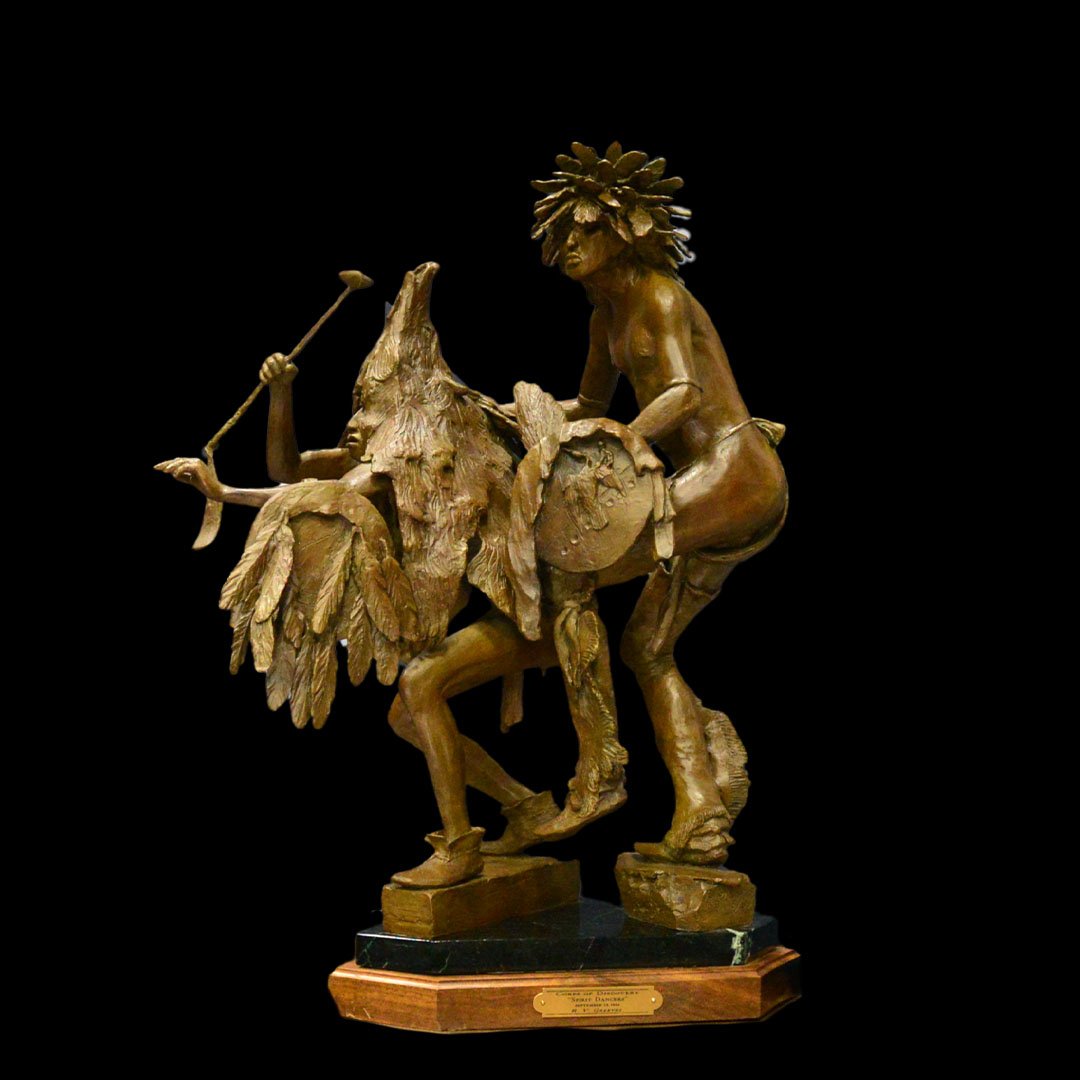Two bodies, one rhythm—the earth remembers through the dance.
Richard Vernon Greeves
Contemporary

“Spirit Dancers – September 28, 1804” by Richard Vernon Greeves is a dynamic, multi-figure bronze sculpture that captures the spiritual and ceremonial heartbeat of Plains tribal life. Depicting two Indigenous dancers in full motion—one masked in feathers and the other crowned in sacred plumage—it is a visual rhythm forged in bronze, filled with energy, power, and ancestral presence.
The figures move not for spectacle, but for purpose: the beating drum, the lifted feet, the arching limbs all convey a spiritual language older than history books. Greeves renders each anatomical detail with respect, but it’s the intangible he captures best—the vitality of ceremony, the transmission of power, the embodiment of myth.
The date refers to Lewis and Clark's first documented encounter with Sioux ceremonial dances, but Greeves wisely centers the narrative not on the observers, but the observed. This piece isn't a historical recreation—it’s an evocation.
“Spirit Dancers” is ideal for collectors, galleries, and institutions committed to honoring Indigenous sovereignty, ritual tradition, and sculptural excellence.